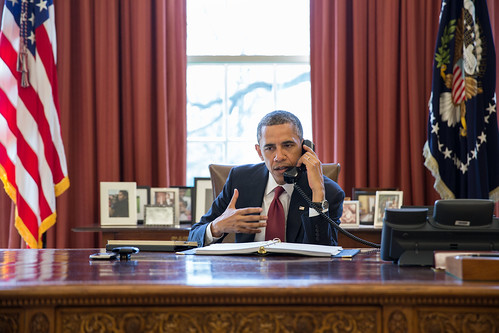Recently in the news:
An elderly English tourist who stole a piece fabric art from a Queenstown museum has been arrested.
The woman, on a holiday bus trip to New Zealand, was stopped by officers in Te Anau last night (Wednesday) after visiting Milford Sound.
Due to leave New Zealand tomorrow, the woman has paid reparations.
A CCTV video showing the tourist brazenly taking the piece of art from one of the walls at Lakes District Museum in Arrowtown garnered widespread local, national and social media attention — with more than 8000 views.
My initial response was to chuckle that someone could just visit a display, and simply take a piece of artwork to use without properly recognising the artist. But then I realised that we do this ourselves quite often.
The digital heist
We live in a time where sharing images is a frictionless activity. It’s easy as a content publisher to take all sorts of visual content and share it online, whether on Facebook, a blog or website. Once a picture is shared and reshared, our normal response is to view it and click share, not thinking about where it came from. Who created this photo? Can I share it?
To be more specific, Christians and churches are no exception. In fact, ministry leaders and church admins can be some of the worst perpetrators. I know because I’ve been caught out a number of times using an image, video, resource without permission for church-related projects. (This post is aimed more at that sort of thing: church bulletins, websites, presentations, other resources that are published by the church).
Graphics and the good news
I admit I’m not very knowledgeable in media laws, and I know it’s not all black and white. Some will debate the grey areas around copyright protection, the extent of “fair use” (does it include churches/nonprofits?), the ethics of file-sharing, freedom-of-information versus compensating content creators. Others point to verses on obeying laws given by God and the earthly authorities he’s put in place (Rom 13:1-5, Deut 5:19, Eph 4:28). These discussions are similarly undertaken over the issue of Youtube videos, file-sharing, e-books and anything that’s shared online — and lamenting that many laws haven’t caught up.
While thinking through all the above issues can be helpful, I think in most debates about file sharing and content reuse I’ve read, rarely is anyone addressing the heart, and the underlying attitude of whether “I’m entitled to take what I like”.
I don’t mean to say that if you’ve published a picture that’s not yours, you have this attitude. But to probe the heart, I should ask myself, why am I taking this image?
(and no, I don’t think we can excuse taking something without permission by saying, “It’s for the Lord.”)
The attitude of taking what I like is a sin as old as time (Gen 3:1-7) – and like all our sins, is covered by the gracious provision of Jesus Christ’s shed blood. The good news of Christ empowers us to change our thinking from “I can have that” to “I can have Christ and what He gives me”, in the freedom of obeying his commands for us.
So I think it’s an uncomfortable double standard to herald good news of Jesus Christ on the back of stolen images.
Yes but we live in the internet age and I have no time
Admittedly image rights management isn’t usually top of a church’s agenda. I mean, unless you’re part of a megachurch, there’s probably no dedicated staff member to design, create and market content ideas. If you want a nice-looking printout, go and sort it out yourself. If you have the bright idea for making a nice Facebook invite, then you do it.
So for the lone office secretary trying to make a flyer for the Saturday’s community outreach on Friday, or the pastor putting together the Powerpoint on Saturday night to accompany their Sunday morning message, the easiest option to find something to accompany the text is to do a google search, and copy the first image we like. But just because we can Google something doesn’t give us automatic right to grab it (that’s like saying I can take a bar of chocolate from the shop because I found it there).
And if we’re ultimately accountable to God for all our actions, taking someone else’s creative output without attribution or recognition will be something to answer for as well.
So what should we do?
1. Ask if you need to use the image.
Using images can help to contextualise our message to the world we live in, what social critic Neil Postman terms “an image-driven culture”. There’s merit in engaging different people with their learning styles: for example, by seeing the layout of the tabernacle and its components a visual learner may better grasp the descriptions given in the Scriptures.
But sometimes amid our image-obsessed society, it’s helpful to push back and ask: will this photo actually add anything? Could I preach this sermon without this graphic? Does my blog post really need this image?
2. Find out if you’re free to use the image.
Everyone knows how to Google an image in 2 seconds. It only takes a few more seconds to find out if you can reuse or adapt that image, by clicking through to the website where it came (usually listed under a “License” section).
For example, this picture is free to use:

So is this one:

But this one of the beautiful Church of the Good Shepherd is not: http://www.flickr.com/photos/12983367@N06/5559979072/
and neither is this brilliant reimagining of the Red Sea crossing that’s graced the cover of many a sermon series: http://www.creamstudios.com.au/Folios/2/50.aspx
We live in an age where there’s plenty of options for legally using visual media, as more and more people share their work under alternatives to traditional copyright (e.g. Creative Commons, Copyleft). In addition:
- Stock photo websites are now very affordable too: you can get an image for $1 in many cases.
- And even if you spot something nice that’s copyrighted (e.g. an image from a news photojournalist), why not ask the author if you can use it? That way you can give honour where it’s due (Rom. 13:7).
In tomorrow’s post, I’ll share some places I’ve found to be helpful for getting visual media specific to church marketing.
In the meantime though, what do you think? Too harsh, or fair enough?
———————





Comments are closed.